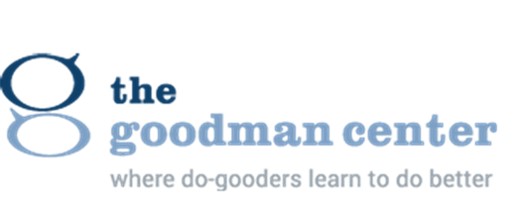The story of how the [“Unmuted” report] (https://www.thegoodmancenter.com/wp-content/uploads/2020/10/Unmuted_GoodmanCenter.pdf) came to fruition actually begins in 2008. With the Great Recession in full swing, everyone was looking for ways to cut costs and work more efficiently. Moving meetings, presentations, trainings and other group activities online was one sure way to save time and money, so there was a noticeable shift in this direction. It was so pronounced, in fact, that The Goodman Center conducted research in 2009 to better understand what was working, what wasn’t, and why.
We published our findings in a report, [Dialing In, Logging On, Nodding Off: The True Costs of Teleconferences, Videoconferences and Webinars] (https://www.hfpg.org/application/files/6715/9110/0838/2_GoodmanCenter_Dialing-In.pdf), and the data was sobering: virtual gatherings were consistently plagued with technical problems, most meeting leaders had undergone little or no training for navigating online environments, and the battle for participation and engagement was frequently a losing one.
This March 2020, along with everyone else, we found ourselves in a radically altered landscape – one in which virtual meetings were no longer just a cost-saving option. Suddenly, they were the only way to proceed.
In April, we decided to offer The Webinar on Webinars for free to provide the guidance that so many public interest professionals were seeking as they moved some (if not all) of their work online. In three months, we conducted this class over thirty times. Every time I facilitated this webinar, though, I heard myself referring to “the research we did back in 2009,” and a nagging question lodged in my brain: why are we still relying on data that’s old enough to go to middle school?
So, we decided to update our research, which seemed especially propitious at a time when more people than ever were experiencing the unique challenges of working remotely. And we followed the philosophy that shaped the research for our book, [Why Bad Presentations Happen to Good Causes] (https://www.thegoodmancenter.com/resources/) – find people who are doing it every day and ask them: what works, what doesn’t, and why?
Our primary instrument for asking these questions was a survey conducted online in July and August 2020, and the audience we were most interested in hearing from was individuals working remotely for nonprofits and foundations, colleges and universities, and government agencies at all levels. Including GEO, we recruited over 12 partners who shared our interest in this research and could generate broad awareness for the survey.
Thanks to this collaboration, 4,405 people took the survey, and they had plenty to say. Most of their “unmuted” responses could be summed up in four words: too much and not enough. Across all sectors, they told us that they were being asked to sit through too many videoconferences for too many hours every day. And the experiences they were having during these convenings were lacking in many respects:
- Too many do not feel sufficiently engaged or included. “Lack of engagement” was the second most commonly reported negative experience (just a few percentage points behind “technical problems.”) We are also not doing nearly enough to ensure that the content of our videoconferences is fully accessible to all participants. When asked, “How often have you seen convening leaders or facilitators create greater accessibility for the content (e.g., closed captioning, language translation)?” only 5% answered “frequently” or “always.”
- There is not enough structure. “Clear structure” was cited as the second most common attribute making videoconferences a positive experience, while “no structure” was the third most experienced negative factor. In the verbatim comments section of the survey, nothing was more frequently mentioned than the importance of a good, clear agenda to ensure meeting time was not wasted.
- Leaders and facilitators have not had enough training. Nearly half (48%) of survey respondents who are currently leading online meetings on a regular basis reported having no training how to do so. If we’re “building the plane as we’re flying it,” too many of us are doing it without even reading the instructions.
Ultimately, we found nine major take-aways from the research, and so we made them the organizing principle for the report. Each take-away has its own section with relevant data from the survey and includes recommendations with actionable steps to help you improve going forward.
Before you dive in, please keep this in mind: as I write this blog, there is no definitive timetable for a return to normality after COVID-19, and the general consensus is that whatever comes next will be different from what was. One prediction that seems fairly reliable is that videoconferences will play a larger role than ever in how organizations function. So, please do not view the report as a short-term pandemic survival guide. The recommendations it contains are for the present and well beyond.
To download a free copy of the report, please click [here] (https://www.thegoodmancenter.com/wp-content/uploads/2020/10/Unmuted_GoodmanCenter.pdf).

